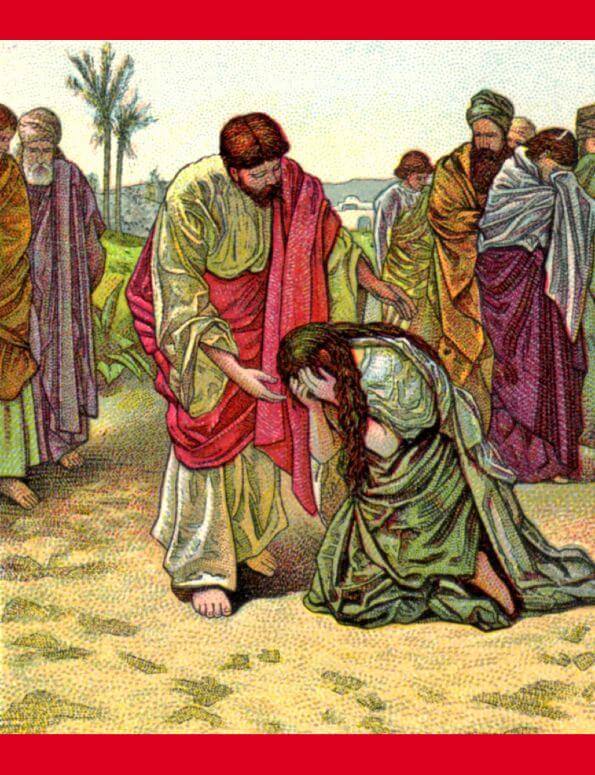

In bereavement, we take time to grieve, to mourn, to heal. With this story, John’s Gospel blesses our own grief and anger at times of death, emotions which are human, normal, expected. They believe in the resurrection, as most of us do, but at the loss of a loved one, they are overwhelmed. They are in pain they weep they scold they feel all the emotions that we feel at times of illness and death. The story of The Raising of Lazarus is hardly about Lazarus the action centers on the bereaved sisters who are angry and upset by his death. “I give you a new commandment, that you love one another…I have loved you.” (John 13:34) As Professor Gail O’Day points out, with this action, Mary is the first person to embody the love that Jesus commands. “The house was filled with the fragrance of the perfume.” (12:3) The sweet aroma wafting around the house replaces the stench of death and the tomb. Martha serves the meal, while Mary brings an enormous quantity of expensive oil to anoint Jesus’ feet. In the next chapter, Jesus is sharing Passover dinner at Lazarus’ home. Some of those who witness this come to belief in Jesus others help to plot his death.īut the story moves on. To her, Lazarus’ death is truly final.Īfter praying to his father, Jesus shouts, “Lazarus, come out.” And Lazarus comes out, dazed and speechless, still wrapped in the funeral linen he must be unbound before he can return to normal human life. Martha objects: after four days, the stench of death would be overwhelming. Seeing the women’s pain and that of their friends, Jesus himself becomes distraught and weeps, causing those in the home to remark, “See how he loved him.” Jesus asks to see the tomb and to have the stone rolled away. Even though she kneels at Jesus’ feet, she says exactly the same critical words as her sister, essentially “Jesus, you should have come sooner.” Those who believe in me will never die.” With this, Martha proclaims Jesus to be “the Messiah, the Son of God, the one coming into the world.” She believes, but her grief and sadness remain. Jesus replies, “I am the Resurrection and the Life. Martha claims she knows this will happen on the last day, but surely not now.

Jesus says to her that her brother will rise again. She knows God would do anything Jesus’ asked, if he had shown up on time. Martha is the first to go out to meet Jesus, saying “If you had been here, Lord, my brother would not have died.” I can almost see her, with their hands on her hips, weeping and scolding. The sisters are distraught, irritated with Jesus, while friends and family have gathered to provide comfort and support. When Jesus finally goes, Lazarus is dead-in the tomb for four long days. His disciples are frustrated when they do not depart immediately for Lazarus’ bedside, but Jesus will not be hurried. Jesus delays, planning a far greater demonstration of his powers than a healing. But they surely do expect him to come to see his friend. The sisters send a message to Jesus, “He whom you love is ill.” Like Jesus’ mother at the Cana wedding who says simply, “They have no wine,” the sisters don’t ask for anything or tell Jesus what to do.

His sisters, Mary and Martha, hold center stage throughout and, as such, provide a true window into the human suffering that surrounds the illness and death of a loved one.Īs the story opens, Lazarus is ill. Yet the reader will note that Lazarus is totally silent: silent in illness, death, and restored life. Treasured by generations of Christians, the story demonstrates how God’s power working through Jesus transforms the tragedy of death into resurrection and hope, pre-figuring Jesus’ own death and resurrection.

The Episcopal New Yorker - Episcopal New York Spring 2019 Mary And Martha And The Death Of Their Brother LazarusĪside from Jesus’ own death on the cross, the most important Gospel story relating to death is what we call the “Raising of Lazarus,” the last of the “signs” or miracles in John’s Gospel (11:1-46, 12:1-8).


 0 kommentar(er)
0 kommentar(er)
